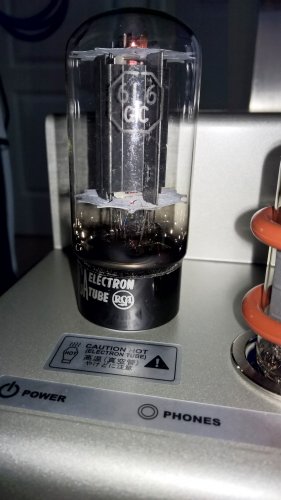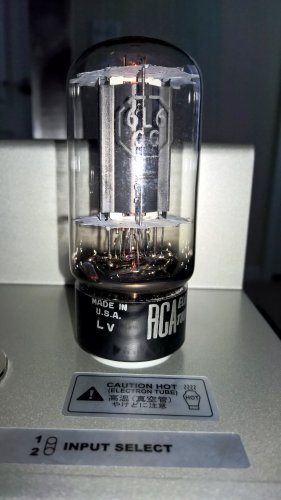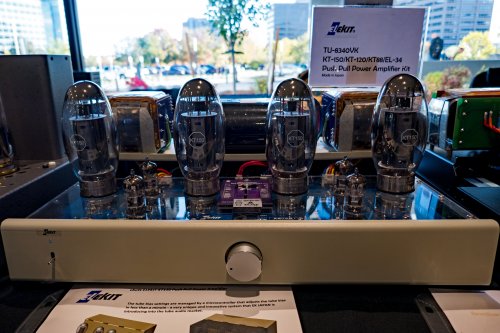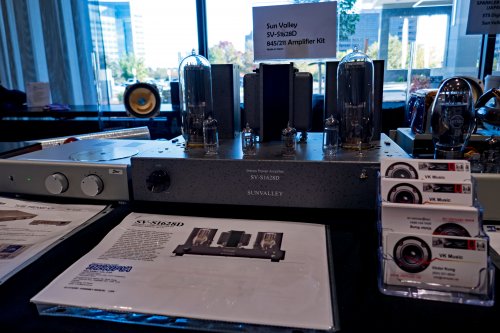I agree with you regarding the RCA blackplate 6L6GCs, I also don't think they are really worth the extra coin, compared to the GE 6L6GCs, which can really be a deal if you search and are still my personal favorite 6L6GCs. Your impressions also sound very similar to mine as well, to me the RCA's are a bit cleaner, refined, with tighter bass, but at the same time, they sound a bit too clinical to me at times and generally have a lot less of a lush sound than the GE's tend to give. To me the GE's also have more bass impact, if a bit bloated at times, but I prefer the overall tone they give compared to the RCA's, which to me can sound a bit sterile and almost too clean. To generalize, to me the RCA's seem to be more solid state than the GE's, which may be a good or bad thing based upon the signal tubes, the headphones/speakers, and one's own preferences, but to me they always just took too much of tubey goodness out of the mix, where the GE's accentuate it. However, I for one really like the tube sound in general, so I tend to gravitate towards those.
With that said, generally I've found that many of the NOS versions of tubes that many people rave are the best online are in fact just a bit more solid state sounding overall than their less raved about counterparts. That is they tend to give a tighter, more controlled, and precise sound. I also believe that many who go from say something like a GE to a RCA 6L6GC automatically believe they are superior because of their tightness and overall cleaner sound, even though it isn't by much, translating this into a perceived higher quality. Taking this into account, it is still really hard to tell unless you try them out for yourself, but knowing this generality and where you typically land on the continuum of tubey versus solid state, can help determine if the cost is worth it to you beforehand. Don't worry though, so many are crazy about the RCA blackplates, especially those who read up on them online, that you should have no trouble selling them if you ultimately determine they are not for you. Another option is to hold on to them for a bit if you don't need the cash right away, get them properly tested, and sell them in a year or two down the road. The prices are only go up these days, especially for those that have large followings online or are talked about more. As more and more folks get into tube amplifiers, the ones that are considered the cream of the crop get snatched up quickly, at almost any price it seems nowadays.
I tend to find that burn-in on tubes, while necessary, isn't like their solid state counterparts, in that they don't take as long, but still require some time. I would say that generally a couple of hours of burn-in is really all that is needed for most tubes, with 24 hours being the absolute max to cause any real difference in my opinion. Now, this isn't just for true NOS, but also for those that haven't been used in many years, so it is always best to wait a couple of hours before judging critically, even if they are used when you purchased, as you never know when the last time they really saw some use was.
As a side note, I'm glad you are liking the Mundorf's! I like them as well, as do several others here on this forum, and your impressions are once again, similar to mine. The caps seem to open up the sound a bit, giving more definition between the notes, a bit more of a cleaner sound, a bit more detail, and to me, sound a bit more natural than the AMTRANS overall. To me the highs seem to be more extended and a bit more present, but it is hard to tell now as it has been so long since I did the upgrade and it was the highs that seemed to have changed a bit after about 30 hours or so of break in. In addition, prior to the upgrade I wasn't able to use my amp for several weeks, so my reference at the time wasn't great. It seems like you really got a baseline and were able to get better impressions than I was. It would be nice to compare a stock version to one whose only difference is the Mundorf caps, but generally I also think it is a worthwhile upgrade for those on the fence, especially considering what some NOS tubes cost, even quality new production, and if you think about it, this upgrade will affect every tube you use with it, whereas the tubes are strictly self-contained. Give it a bit of time and see if you notice any differences as they burn-in a bit.
As another side note, to those that are interested in the 8600, I'm hoping to get some good impressions of it this weekend when I see Victor at RMAF. I spoke with Victor a few days ago over the phone and he really likes it! He told me that it is so quiet that it's scary and that the tone is absolutely amazing, especially with piano. I'm really excited to hear it and spend some time with Victor again. More to come...












































